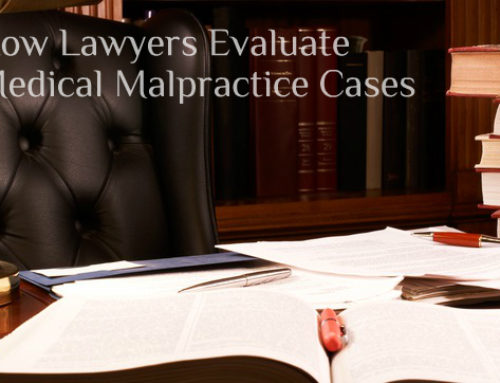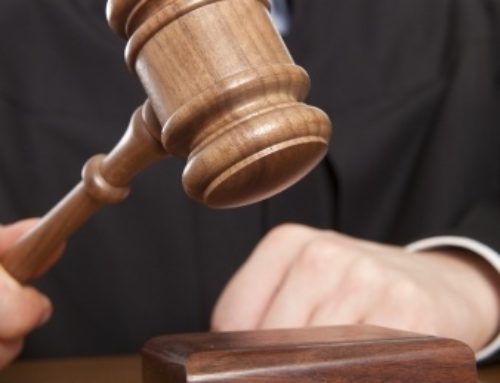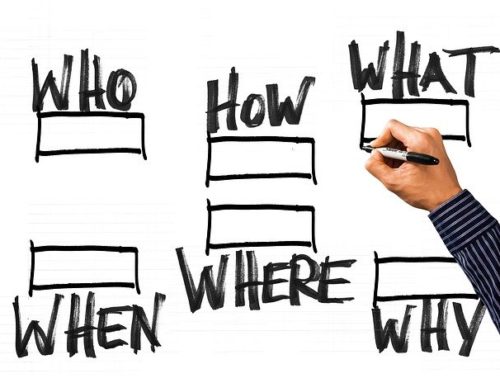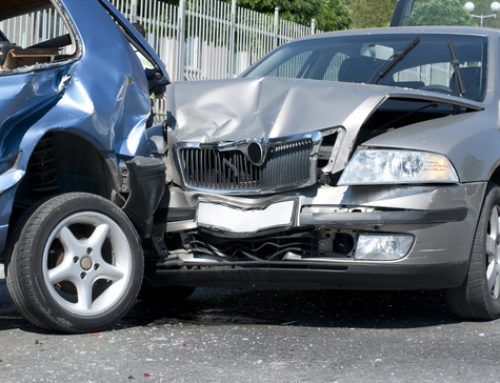Most of us think of a traffic collision as one vehicle running into another one. The definition includes any incident involving at least one moving vehicle and any other vehicle, pedestrian, animal, or object which occurs on a public road. There’s a lot of potential to have a traffic collision, even in areas where there is little to no traffic. They don’t always cause injuries. When they do, several factors determine which types are the most likely and how severe they are.
Some of the most common injuries resulting from a collision include whiplash, scrapes and cuts, and head injuries. All of these are soft tissue injuries which can occur due to the impact of the collision itself or from that of your body hitting solid objects. Soft tissue injuries can occur in all types of accidents, either externally where they’re visible or internally where they aren’t.
Fractures can also occur during a traffic collision. Like soft tissue injuries, they range in severity and pain. Sometimes it’s impossible to tell whether you have a soft tissue injury or a broken bone. If you experience any pain or tenderness after a wreck, get immediate medical attention. Tell the medical provider that you were in a collision and detail all of your symptoms.
What You Need to Know About Your Bones
The human body consists of 206 bones which make up the human skeleton. Of these, there are four different types including:
- Long Bones, such as those in the arms and legs
- Short Bones, including those in the wrists and ankles
- Flat Bones, which make up the ribs, skull, shoulder blades, and breast
- Irregular Bones, which don’t fit the description of the other three types, such as the vertebrae of the spine
Speed plays a major part in causing fractures during traffic collisions. When the vehicle comes to a sudden, jarring stop after making contact with another object, the impact can cause bones to break. Some bones are more vulnerable to breaking because of their structure. The small, flat structure of the ribs make them easy to break, even in low-impact collisions.
The arms, legs, hips, and shoulders, and face are also vulnerable to fracture in car accidents. When the impact puts more force on the bone than it can withstand, it breaks. Sometimes, contact with the vehicle or other surface causes the fracture. For example, a motorcyclist who gets thrown onto the road might have multiple fractures. The same motorcyclist might have a limb caught between two surfaces that crush one or more bones. Different types of impacts cause different types of breaks.
Types of Fractures
Broken bones usually aren’t life-threatening. All breaks take time to heal, often resulting in time off from work and other activities. More severe breaks might require surgery. There is the risk of damaging the organs or developing infections. Sometimes the break is severe enough that the person never regains normal use of the affected joint or limb.
There are several types of fractures that you might receive during a traffic collision.
- Simple – The bone is still in place and aligned
- Complex – The bone is broken enough to cause displacement, making treatment more difficult
- Comminuted – The bone is broken into multiple pieces, or splintered
- Compound – The bone breaks through the skin and is visible
- Spiral – The bone twists around
- Depressed – The bone presses inward, such as with a skull fracture
Just as there are different types of bone fractures, there are also different types of collisions that cause them. Some types of impacts are more likely to cause broken bones because of the angle of the crash. Heavier vehicles and those traveling at greater speeds are also more likely to cause fractures.
Some of the types of traffic collisions that are most likely to cause fractures include:
– Head-On Collisions – When two vehicles hit head-on, it increases the force of impact according to the speed that each is traveling. Broken bones are among the many potential injuries of these types of collisions, including those to the back and spinal cord.
– Rear-End Crashes – Whiplash is the most common injury from rear-end crashes, sometimes involving both soft tissue and bone. Other injuries to the neck and back aren’t uncommon, along with head injuries resulting from contact with the interior of the car.
– Side Impact Crashes – The potential for serious injury depends on the side of the vehicle where you’re riding. If the other vehicle hits the side of the car where you are, you’re more likely to receive severe injuries. Vehicles traveling at significant speeds can cause soft tissue injuries and bone fractures to any area of the body.
– Rollovers – Some vehicles roll over due to the impact of a crash. SUVs with a higher center of gravity are more prone to rollovers than most other vehicles. Rollovers often result in spinal cord injuries and broken bones.
– Commercial Vehicle Crashes – The large size and heavy weight of large commercial vehicles and trucks make them especially dangerous to a personal vehicle. The impact often causes head injuries broken bones, crushing injuries, injuries to the spinal cord, and death.
Traffic Collisions Involving Pedestrians
Collisions between a pedestrian and a vehicle are of special concern. Any time you walk on the sidewalk, jog along the running trail, or cross the street, you’re a pedestrian. For most of us, that includes at least a small part of our day. The idea of being the victim of a traffic collision might never cross your mind. The reality is that these types of collisions happen every day. They are more likely to result in serious injuries and fatalities. During 2017, 5,977 pedestrian deaths occurred due to traffic crashes.
Any time you are a pedestrian, you are at risk of becoming injured due to a collision. The statistics include children using crosswalks going to and leaving school. It includes adults going from their vehicle or bus stop to and from work. Sometimes it’s the driver of a vehicle that is distracted who doesn’t see the person crossing the street. Sometimes the pedestrian isn’t paying attention to the oncoming traffic.
When traffic collisions involve pedestrians, there are often multiple traumatic injuries, including broken bones. Sometimes additional injuries occur when the pedestrian falls to the ground after the initial impact. Fractures often occur to the lower extremities and the spinal cord. Pedestrians who experience broken legs often require extensive treatment and endure severe pain, along with a decreased quality of life.
Diagnosing and Treating Broken Bones After a Traffic Collision
Any broken bone is serious and requires immediate medical attention. Even simple fractures can take a long time to heal. More serious breaks can lead to complications such as nerve damage or blood vessel problems. They also lead to arthritis later on.
Fractures can lead to a risk of infection. Open breaks that pierce the skin allow bacteria inside. Dealing with the pain of a broken bone can also compromise your immune system. It makes it easier to develop infections and harder to heal from them.
Fractures don’t always heal properly. When bones are crushed or splintered, it often results in deformity that persists the rest of your life. The deformity might be minimal or severe.
Sometimes the pain you experience from a broken bone persists after the bone heals. You might have discomfort for years, or possibly the rest of your life. Getting immediate treatment is essential for minimizing complications. For suspected simple fractures, X-rays may be enough to determine if there is a fracture. However, they don’t usually show injuries to the surrounding soft tissue.
Your medical provider might use other imaging equipment such as ultrasound or MRI to view the location of your pain. This will provide a clearer picture of any damage to the bones or surrounding organs. That’s even more important when a broken bone splinters and pierces an organ causing internal bleeding.
The initial treatment for many broken bones is stabilization. The doctor or a bone specialist places a splint or cast on the affected limb to hold it in place while it heals. If the bone is still aligned and there is no other damage, this might be the extent of your treatment.
Immediately after the injury, the body begins forming new bone at the edge of the fractured bone. Over time, new tissue forms in the break to restore the bone’s original structure.
If the bone isn’t properly aligned, you might require surgery. During the surgical procedure, the doctor will use metal rods, screws, or wires to hold fractured pieces of bone together.
If the misalignment isn’t severe, the specialist might manipulate the bone back into place before applying a cast. Traction is another treatment option used for some broken bones. A traction system applies a gentle, steady pulling motion to align the bones.
Sometimes a procedure called “external fixation” is used to set the fractured bone from the outside. The surgeon places pins or wires into the bone through the skin. They then connect them to a car or ring to hold them in place. The pins stay in place until the bone has healed.
Fractures usually take four to six weeks to heal. More severe fractures might take longer, up to several months. Your doctor will probably remove your cast or brace before the bone is completely healed to prevent joint stiffness. You can’t start rebuilding the muscles and strength in the affected area until the bone is completely healed. If you require physical therapy, you must gradually increase the intensity over time.
When Someone Else Causes Your Broken Bone
Broken bones can be painful and expensive to treat. Serious fractures often mean extensive time off from work. In the worst cases, you might never be able to return to a job in the same capacity that you worked in before. A fracture can greatly impact your quality of life for a long time.
If your fracture occurred from a traffic collision that was someone else’s fault, you might have the right to file a personal injury claim. Often, the limits of coverage on the at-fault driver’s insurance aren’t enough to pay all of your damages. Their insurance company might even claim that you were partially or totally at fault for the collision. That’s why you need a personal injury attorney to help you with your claim.
It doesn’t matter whether you were the driver or passenger of a car or motorcycle, or you were a pedestrian when the collision occurred. If the other driver caused your injury, you have the right to get compensation. The severity of the injuries makes it more important than ever to get justice. The potential for future complications and ongoing medical treatment makes it just as important to protect yourself from future expenses.
Many car accident victims falsely believe that they will get everything they need from the at-fault driver’s insurance company. The cost of medical treatment makes it much less likely that the coverage is enough to pay for everything. Even if it is, insurance companies don’t always pay willingly. They might challenge the extent of your injury and whether you were at-fault for the collision.
Even if you have the best medical insurance to cover your treatment, it won’t cover all of your medical costs. Some medical costs aren’t covered at all and you must still meet your deductible and co-pays out-of-pocket. A lack of finances should never be the reason you don’t get the treatment you need for a broken bone. A personal injury claim can help you get justice and get the compensation you need to help you heal.
If you suffer a broken bone during a traffic collision that is someone else’s fault, contact Ingerman & Horwitz. Tell us what happened and how to find out if you have a case. It doesn’t cost you anything to speak with an experienced personal injury attorney. Whether you need to make the insurance company pay or pursue compensation from the at-fault driver, we can help. Let us help you make sense out of a challenging legal system!















